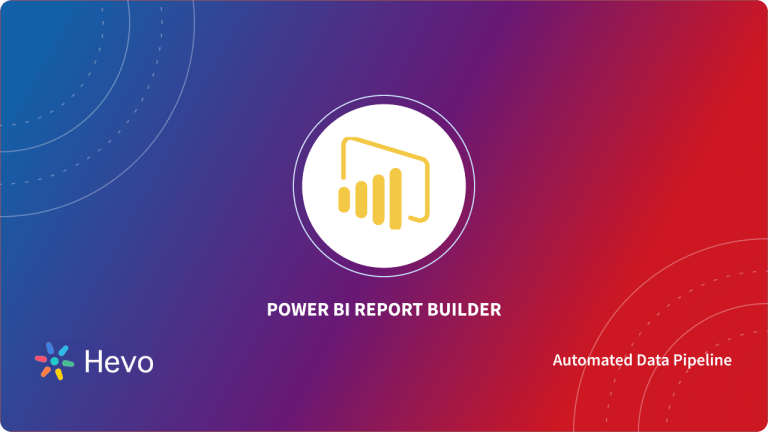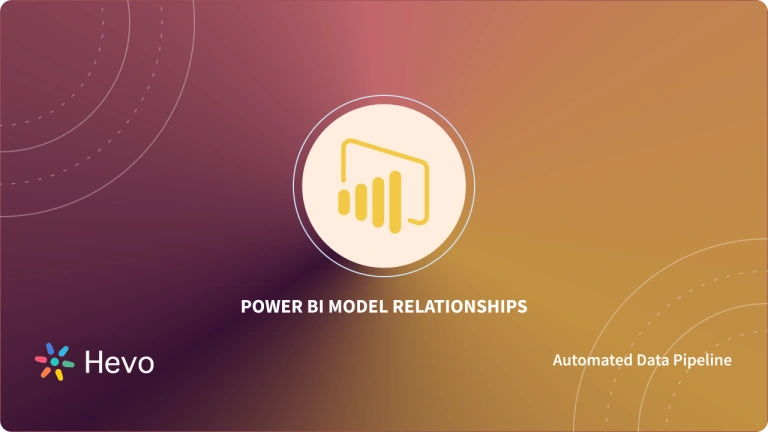Have you ever caught yourself trying to make sense of worksheets containing vast data sets and had no idea where to start? Do you know how to extract meaningful insights from data without wasting hours on it? The solution is using the power of a pivot table that can draw insights from even with the most complex standard reports. Pivot tables are effortless to create. However, Excel is not the only tool for business owners to create Pivot tables to slice and dice their database.
Companies can use Microsoft Power BI, a suite of business intelligence tools like apps, software services, and data connectors. You can create Power BI Pivot tables to analyze your organizational data.
In this article, you will learn how to effectively create & work with Power BI Pivot tables.
Table of Contents
What is Power BI?
Microsoft Power BI is a popular business intelligence and visualization tool that can analyze data and turn it into visually impressive interactive insights. Power BI can operate with simple data sources like Microsoft Excel or complicated sources like cloud-based or on-premises hybrid data warehouses.
With this business and data analytics service, professionals can process, analyze, and visualize vast volumes of data. Companies can use Power BI to draw conclusions, extract insights, and share results as reports and dashboards across teams. Power BI also comes with an easy drag and drops feature. There are three types of Power BI platforms: Power BI Desktop, Power BI Service (SaaS), and Power BI Mobile (for iOS and Android devices).
Hevo Data, a No-code Data Pipeline, helps integrate data from various databases with 150+ other sources and load it in a data warehouse of your choice. It provides a consistent & reliable solution to manage data in real-time and always has analysis-ready data in your desired destination. Check out what makes Hevo amazing:
- Easy Integration: Connect and migrate data without any coding.
- Auto-Schema Mapping: Automatically map schemas to ensure smooth data transfer.
- In-Built Transformations: Transform your data on the fly with Hevo’s powerful transformation capabilities.
- Load Events in Batches: Events can be loaded in batches in certain data warehouses.
Key Features of Power BI
- Collaborate Quickly: You can smoothly collaborate within your organization. It delivers data on one easy screen that’ll meet your organizational data analytics needs.
- Delve Deep Into Data: You can incorporate Power BI with your existing applications like Dynamics, Salesforce, and Google Analytics. You can embed these applications interactively and intuitively and delve deeper into the data analysis.
- Consume And Share Data Faster: Power BI reports can seamlessly integrate across various Microsoft applications such as Teams and SharePoint online.
Power BI Products
- Power BI Desktop: A free downloadable application for your computer that allows you to connect, visualize and transform your data and create reports. You can integrate data from existing applications and create ‘data models.’
- Power BI Pro: Power BI Pro allows you to share dashboards, subscribe to dashboards and reports, publish content to other workspaces, and share with other users with a Pro license.
- Power BI Premium: The premium version lets you get dedicated and enhanced resources that help you to maximize its performance potential. You also get access to the Power BI Report Server.
- Power BI Mobile: You can access Power BI dashboards and reports on Android, Windows, or iOS.
- Power BI Embedded: This feature enables restricted access to your sensitive company information.
Components of Microsoft Power BI
- Power Query: It’s a data transformation engine that enables you to discover, combine, connect, and refine data sources. You can download Power Query for Excel or use it with Power BI Desktop.
- Power Pivot: This is a data modeling technique with which you can establish relationships, create data models, and create calculations. Pivot uses Data Analysis Expression language to model data.
- Power View: This is available in Sharepoint, Excel, Power BI, and SQL Server. You can create interactive graphs, maps, charts, and other visuals that visualize your data and bring it to life. Power View can filter data for each data element or the entire report.
- Power Map: Power Map is for Excel and Power BI. It is a 3-D data visualization tool that lets you plot more than a million rows of data visually or map your information on Bing Maps. You can do it in 3-D format from an Excel table or Data Model in Excel. Power Map gets the best visualization based on latitude, country, longitude, state, city, and street address information.
You can take a look at the key services provided by Power BI to get a better understanding of how the platform works.
What is a Pivot Table?
A pivot table is a data summarization tool that creates an overview of your data and displays the summarized data. Pivot tables are handy if you have to analyze or compare long rows or columns. They are helpful to extract meaning from seemingly extensive data on your screen and help you draw valuable conclusions more quickly. The “pivot” means that you can rotate (or pivot) the data in your table and view it from a different perspective. You can create Pivot tables in Power BI or Excel.
What are Pivot Tables used for?
Pivot tables offer user-friendly methods to summarize large amounts of data quickly. You can use pivot tables to understand, display, and analyze numerical data in detail while identifying and answering incidental questions surrounding it.
Here are a few scenarios where a pivot table could be the most efficient solution:
- Comparing Data: Say you have a worksheet containing weekly sales data for ten products, and you want to figure out which product is the most profitable. Instead of manually adding the corresponding sales, you can use a pivot table that automatically aggregates all sales data and calculates their respective sums.
- Combining Duplicate Data: A pivot table can be beneficial when you have multiple instances of individual data points and combine the duplicates. Instead of manually searching for and connecting the duplicates, Pivot Table can summarize your data and integrate the duplicate instances.
- Calculate Data: You can use Pivot tables to automatically calculate things that you can’t easily find in a basic Excel table—for example, counting rows that have something in common. The pivot table eliminates the need to manually sort the Excel sheet and count each row.
- Adding Default Values To Empty Cells: You can customize a pivot table to automatically fill empty cells with a default value like To be Decided (TBD) and fill it as the new data comes. You can update your data source and refresh a Pivot Table. To automatically fill empty cells, right-click your table and click PivotTable Options. Check the ‘Empty Cells As box‘ and enter the value/data you’d like displayed when a cell is empty.
How to Create a Power BI Pivot Table?
Follow these steps to create a Power BI Pivot Table:
- Step 1: Select an empty cell in your Power BI workbook.
- Step 2: Go to the Insert tab > PivotTable > From Power BI.
- Step 3: Insert PivotTable dropdown showing the “from Power BI” option.
You can choose from multiple data source options like Power BI or an external data source. This completes your Power BI Pivot Table creation in just 3 easy steps.
You can also take a look at how you can easily build a Pivot in Tableau to work seamlessly with your Tableau data.
Working with Power BI Pivot Tables
You can perform various operations in your Power BI Pivot Tables:
- Analyze Worksheet Data
- Analyze External Data
- Delete A Power BI PivotTable
- Use The Field List To Arrange Field
- Create A PivotChart
- Use Slicers To Filter Data
1. Analyze Worksheet Data
You can use Pivot Tables to analyze data from various sources like Excel, Power BI, or external sources. To analyze a worksheet data, select the cells you want to analyze and select Insert > PivotTable to analyze the worksheet data. Your data will be organized in columns with a single header row.
2. Analyze External Data
If you have data stored outside of Excel, you can connect to the external data source, and then create a Power BI Pivot Table to summarize, explore, analyze, and present that data. To do that in the Create PivotTable dialog box, click Use an external data source under Choose the data that you want to analyze.
3. Delete A Power BI Pivot Table
You can remove the Power BI Pivot Table when you no longer need a Power BI Pivot Table by pressing the delete key.
4. Use The Field List To Arrange Field
You can make edits to the design of the Power BI Pivot Table by arranging/removing/adding its fields. You can sort or filter the columns in the Power BI Pivot Table. Rearrange the orders if you have more than one field in an area by dragging the fields into the precise position you want.
5. Create A PivotChart
Not everyone can look at numbers in a Power BI Pivot Table and quickly understand what’s going on. A great visual alternative is PivotCharts, an excellent way to add data visualizations to your data. To create a PivotChart from your Power BI Pivot Table, select PivotTable Tools > Analyze > PivotChart.
6. Use Slicers To Filter Data
Slicers provide buttons that help you to filter Power BI Pivot Tables. Slicers can also help indicate the current filtering state, making it easy to understand the currently displayed data. to use slicers in Power BI Pivot Table, navigate to the Home tab & go to Insert > Slicer.
Conclusion
In this article, you have learned how to effectively create & work with Power BI Pivot Tables. Power BI is a rich collection of business intelligence tools for analyzing and visualizing data. Power BI Pivot Tables are a powerful tool for comparing data, combining duplicate data, etc. The Power BI Pivot Tables are highly customizable allowing you to perform basic & advanced calculations, data filtering, data preparation, data sorting, etc.
As you collect and manage your data across several applications and databases in your business, it is important to consolidate it for a complete performance analysis of your business. To achieve this you need to assign a portion of your engineering bandwidth to Integrate data from all sources, Clean & Transform it, and finally, Load it to a Cloud Data Warehouse, BI Tool like Power BI, or a destination of your choice for further Business Analytics. All of these challenges can be comfortably solved by a Cloud-based ETL tool such as Hevo Data.
Sign up for a 14-day free trial and simplify your data integration process. Check out the pricing details to understand which plan fulfills all your business needs.
Frequently Asked Questions
1. Can you do pivot tables in Power BI?
Yes, Power BI supports pivot tables, but they’re called “matrix visuals.” You can use them to summarize and analyze data.
2. Is Power Pivot available in Power BI?
Power Pivot isn’t directly available in Power BI, but its features, like data modeling and DAX calculations, are integrated into Power BI.
3. What is a standard PivotTable visualization called in Power BI?
In Power BI, a standard PivotTable-like visualization is called a “matrix” visual. It lets you organize and drill down data in rows and columns.











